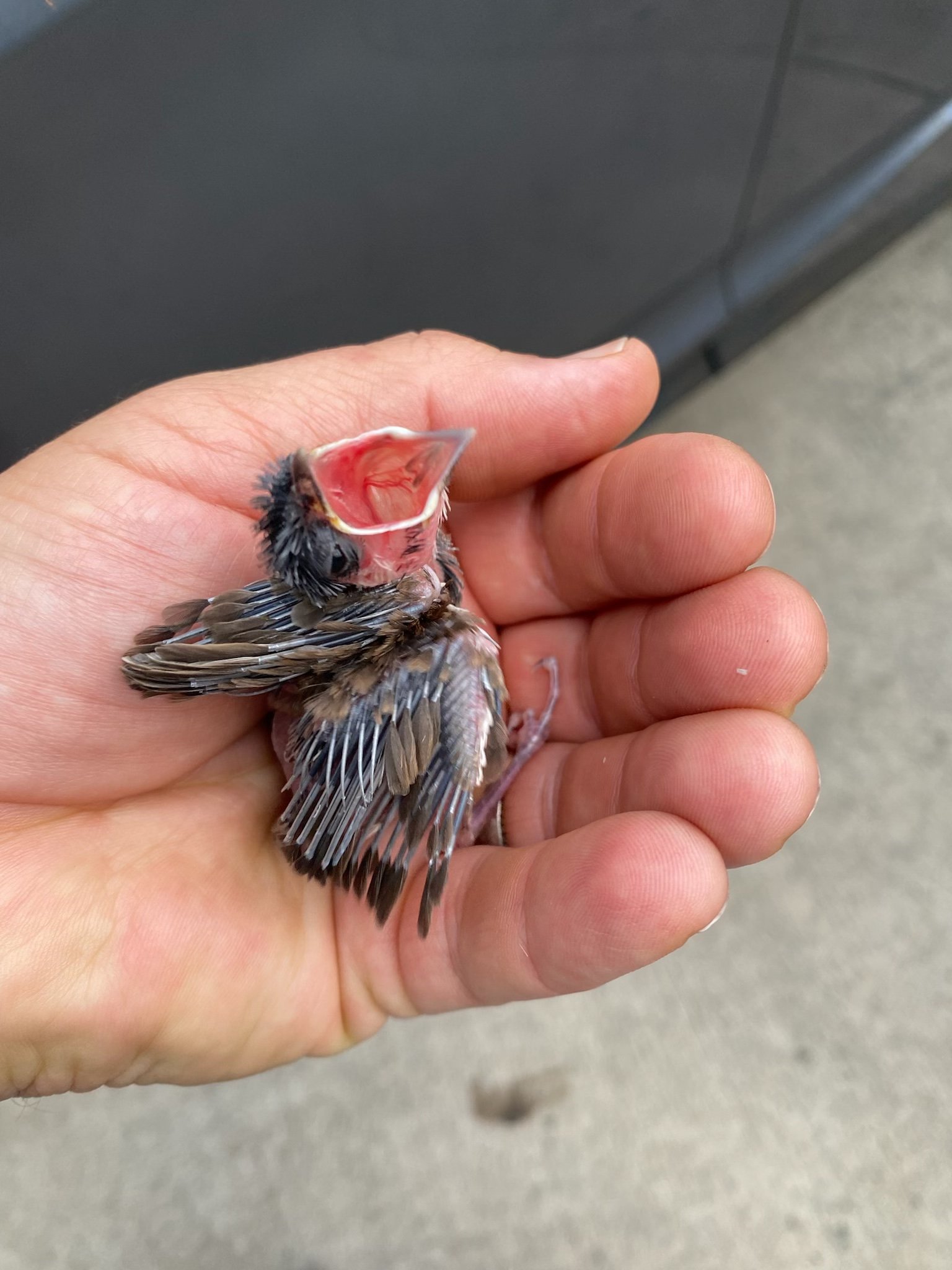
Bulbul
-

Nestling
Bulbul Nestlings eat every 15 minutes
-

Fledgling
Bulbul Fledglings eat every 30-45 minutes
-

Adult
Bulbul Adults eat every hour
Diet: Bulbul (Red Vented Bulbul, Red Whiskered Bulbul)
Basic Diet:
Formula is not suggested as they are not seed eaters.
Protein Options:
Egg Food Bird Supplement (Vitakraft or Quicko)
Mazuri Insectivore Diet
Live crushed mealworms, crickets, beetles or grasshoppers
Avoid earthworms, as they can carry parasites like hairworms
Dried crushed mealworms, superworms, crickets or grasshoppers
Mashed hard boiled or scrambled egg (chicken or duck)
Turkey or chicken baby food
Fruit Options (you can purchase the fruit in the form of organic baby food - no added sugar)
Banana
Mango
Strawberry
Papaya
Apple
Blueberry
Avoid citrus fruits which can disrupt their digestive systems. Other foods to stay away from: Avocado and Chocolate.
Supplemental Options:
Boiled or scrambled chicken, duck or quail eggs (no oil)
Small amounts of tofu can be added
Dehydration supplement:
Unflavored Pedialyte
How to feed:
Mix puree / mashed fruit or human baby food, and optional ingredients.
40% fruit, 60% protein options. Add water/Pedialyte to the consistency of thick but watery paste.
When the Bulbul gapes for you, you can feed small bites of non-citrus fruit off the end of a coffee stirrer, soft side of the toothpick, or skewer for as many times as it opens its mouth.
How often to feed:
All birds need to be fed from sunrise to sunset.
Young Bulbul hatchlings and nestlings: fed every 20 minutes, giving them as much as they will gape for. The younger the bulbul, the more frequently it needs to be fed.
Naked (non-feathered) bulbuls should be fed every 20 minutes
Pin feather bulbuls can be fed every 20-40 minutes
Young bulbul fledglings: fed every 45m - 1.5 hours.
Older bulbul fledglings fed every 1-1.5 hours
Adults: every 1 - 2 hours
How to Ween:
Nestlings will start to explore and naturally peck around the cage at different things.
1. Scatter mealworms or other dried or live protein sources around the cage
2. Put soft (papaya or mango) fruit inside the cage, change the fruit every 6 -8 hours.
Fruit Options
Banana
Papaya
Strawberries
Blueberries
Apples
Mango
3. Start to put grass and other leafy dark greens around the cage
Continue hand feeding every 2 hours throughout the weaning process
Gradually decrease the amount of formula given daily as they start to peck at the other food items around the cage.
It is important not to rush the weaning process. Some birds take longer than others to wean.
Helpful tips:
As your bird weans, you can begin introducing proteins such as egg, crushed/dried, and fresh mealworms, crickets and grasshoppers.
Sprinkle crushed dried super worms, crickets or mealworms onto fresh fruit. This offers protein that is necessary for feather growth and development. You can also sprinkle Mazuri Insectivore Diet over the fruit.
Bulbuls require 50% of their diet to be protein. Every day they should be offered live fresh bugs such as crickets, beetles, mealworms, or grasshoppers to ensure their proper development.
In a Pinch:
As an alternative, if you do not have access to the fruit pelleted food, you can add infant rice cereal with mashed skinned fruit. Do not forget to add vitamin and calcium drops to mix.
Did you know?
Bulbuls will ‘Gape’ by opening their mouths to be fed. The easiest method would be to put food on the end of a skewer or soft side of a toothpick right into their mouths.
Due to bulbuls being gapers- they do not store food to digest at a later time. What goes in, comes right out! Bulbuls (like mynahs and mejiros) require tedious feeding from Sunrise to sunset.
Bulbuls frequent forested valleys and urban areas of Honolulu.
Fact: Red Vented Bulbuls are often slightly larger than the similar species the Red-Whiskered Bulbul.
Red Vented Bulbul
(PYCNONOTUS CAFER)
Source:
“Red-Vented Bulbul.” Hawaii Invasive Species Council, Hawaii Government, 6 Mar. 2020, https://dlnr.hawaii.gov/hisc/info/invasive-species-profiles/red-vented-bulbul/.
-
Roughly 8.5 inches long
-
Kauai: Not known to be present.
Oahu: Present in large numbers island-wide. Residents and agencies should prevent transport to neighbor islands.
Maui: Not known to be present.
Big Island: Several sightings around the Mauna Lani area on the Kona side, sighting near Hilo.
-
Native to Asia, from Pakistan to China, introduced to Hawaii as pets and illegally released into the wild in the mid 1950’s on Oahu.


